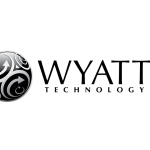Abstract:
Local internal electric fields in complex organized systems like proteins can be measured using the vibrational Stark effect (VSE). These fields can be very large and can affect chemical reactivity. I will briefly explain the underlying physical concept and strategy we have developed to apply the VSE to a wide range of systems. This general concept of electrostatic catalysis and the methods we have developed have proven to be a general approach and has been applied to several enzymes to measure the electrostatic contribution to catalysis. The concept can be extended generally to chemical reactivity, an example being covalent drugs.
Recent work addresses the question whether larger fields and correspondingly larger rates can be created either by design or by evolution? Using the hydride transfer enzyme liver alcohol dehydrogenase (LADH), we recently showed that mutations and metal replacements at the active site can produce both larger fields and faster rates, extending and strengthening the concept of electrostatic catalysis. This suggests that an important missing link in the quest for better catalyst design, whether biological or non-biological, may be the electric field. By using an aldehyde inhibitor, we can measure projections both on the carbonyl C=O bond and on the C-H (with H replaced by D) at the same carbon. The results suggest that the protein active site creates a unique pre-organized electrostatic environment. Implications of both observations for enzyme design will be discussed.
About the Speaker:
Steven Boxer is the Camille Dreyfus Professor and Chair in the Department of Chemistry at Stanford University. His research interests are in biophysics: the interface of physical chemistry, biology, and engineering. Topics of current interest include: electrostatics and dynamics in proteins, especially related to enzyme catalysis; excited state dynamics of green fluorescent protein, especially split GFP, with applications in biotechnology; electron and energy transfer mechanisms in photosynthesis; and the fabrication of model membranes assemblies to simulate, manipulate and image biological membranes. He is the recipient of several awards and is an elected Fellow of the American Academy of Arts and Sciences, the Biophysical Society, and the National Academy of Sciences.



